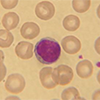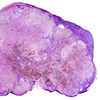Triglycerides
Specimen Volume
1 ml blood minimumSample Preparation
Centrifuge
Turnaround Time
1 DaySample Processing In Laboratory
Usual
Sample Stability
Specimens stable at 4°C for 10 days. For longer periods, store serum/plasma frozen.
General Information
Triglycerides are the chemical form in which most fat exists in food as well as in the body. They are present in blood plasma and, in association with cholesterol, form the plasma lipids.
Triglycerides in plasma are derived from fats eaten in foods or made in the body from other energy sources like carbohydrates. Calories ingested in a meal and not used immediately by tissues are converted to triglycerides and transported to fat cells to be stored. Hormones regulate the release of triglycerides from fat tissue so they meet the body's needs for energy between meals.
Excess triglycerides in plasma is called hypertriglyceridemia, which is linked to the occurrence of coronary artery disease in some people. Elevated triglycerides may be a consequence of other disease, such as untreated diabetes mellitus. Like cholesterol, increases in triglyceride levels can be detected by plasma measurements. These measurements should be made after an overnight food and alcohol fast
Patient Preparation
Triglycerides are best measured after the patient has been fasting for 12 hours so that the production and metabolism of VLDL has reached steady state and there are no chylomicrons present.
Reference Range
Optimal level (Joint British Societies guidelines) is <1.7 mmol/L
Specifications
-
EQA Status:
NEQAS
- EQAS Scheme: Yes








